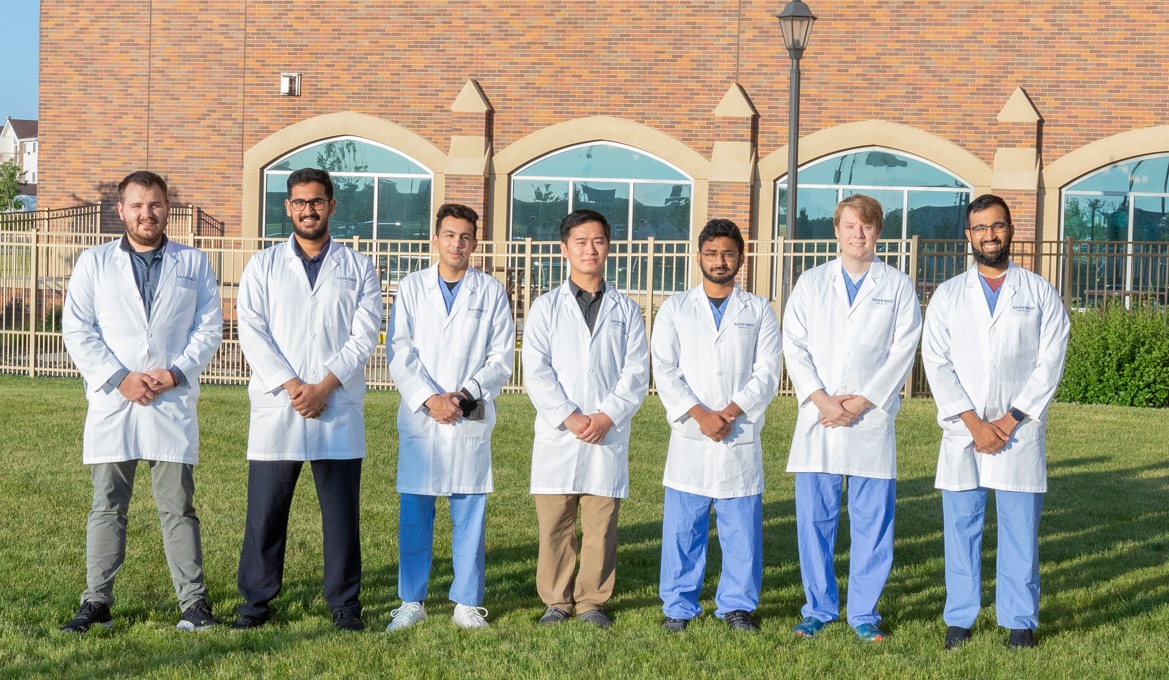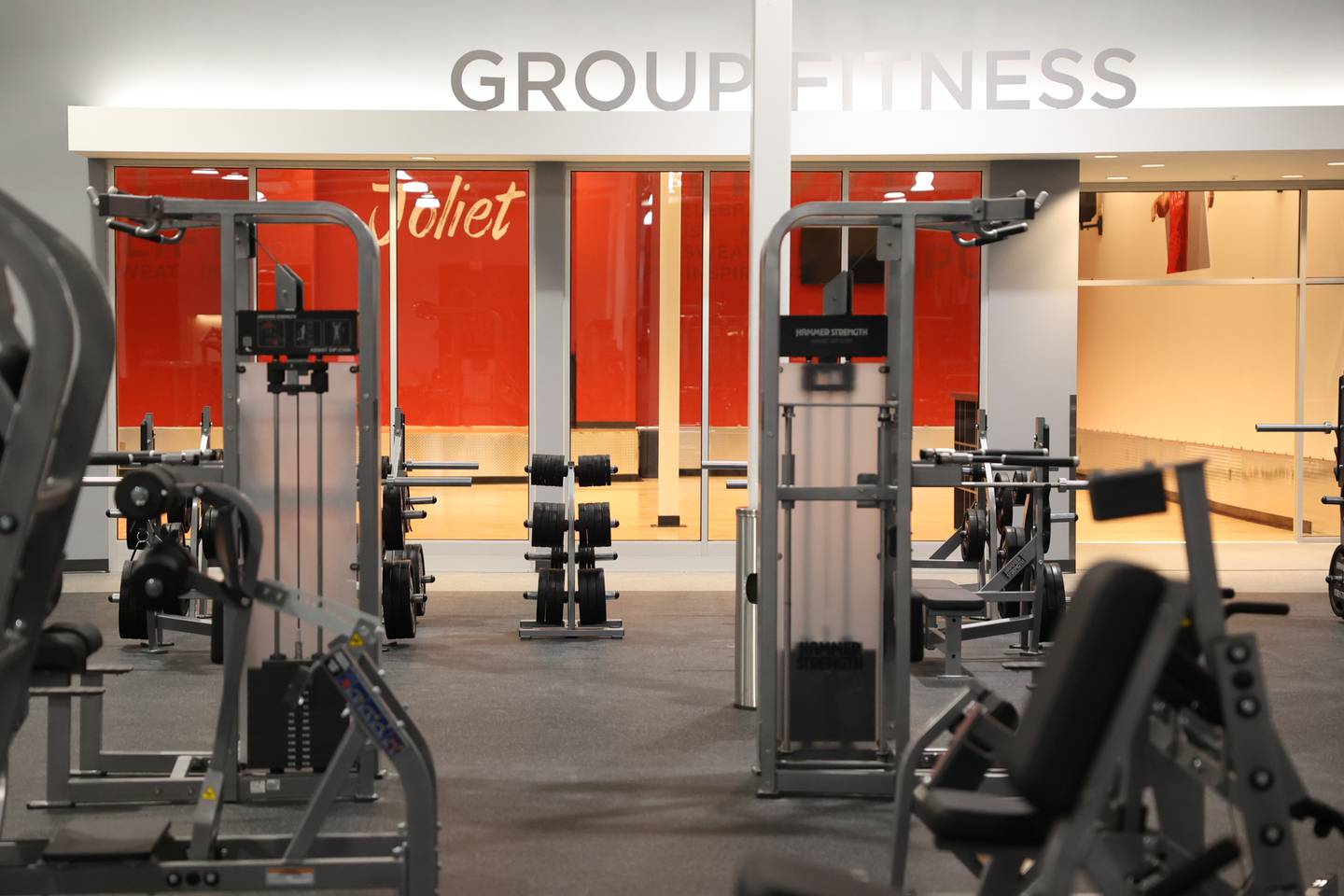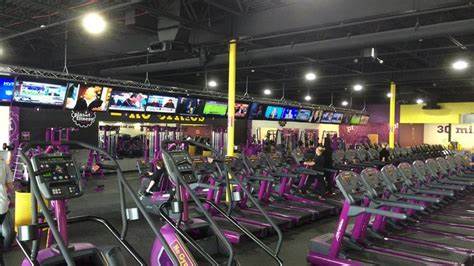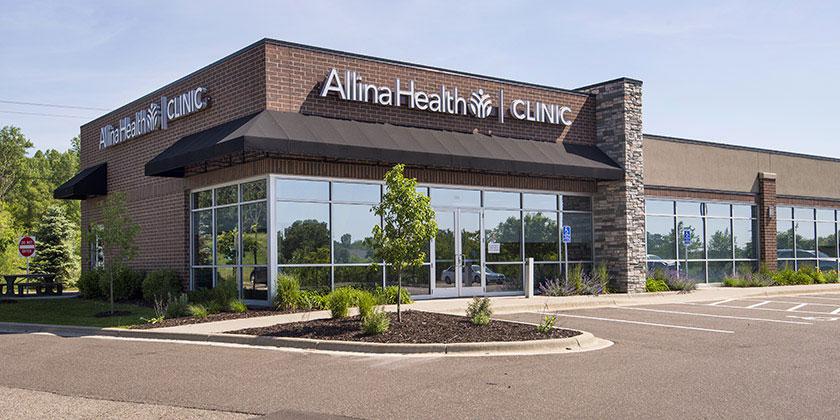In Lebanon, the place Antoine Beayno, MD, grew up and went to clinical college, homosexuality is prohibited. LGBTQ+ other folks will also be fired, blackmailed, or arrested. They infrequently are even refused hospital therapy, says Beayno, who has lengthy been involved concerning the well being of this persecuted network.
So Beayno, now a second-year psychiatry resident at Mount Sinai Morningside/West in Long island, set his points of interest on coming to the USA, the place he may apply medication in LGBTQ+, HIV, and transgender clinics.
Even whilst operating grueling hours as a resident again in Lebanon, Beayno began plowing his method via a mass of necessities and suggestions — an English-language take a look at, U.S. clinical licensing assessments, and extra — to realize the residency slot that every one world physicians want in the event that they need to apply medication in the USA.
Right through, Beayno anxious whether or not he can be a number of the make a selection cadre who make it in the course of the aggressive U.S. residency software procedure — after which get the considered necessary visa.
However Beayno regrets none of it.
“Now and again I pinch myself and suppose ‘Am I actually right here?’” he says. “There simply aren’t any alternatives like this again house. I’m studying and contributing greater than I had even was hoping.”
Beayno is a part of a U.S. staff this is steadily noticed however little understood: foreign-born and -educated medical doctors who come to the USA for residency and, in lots of instances, keep long-term.
Believe some statistics: In 2021, roughly 1 in 5 energetic U.S. physicians had been born and attended clinical college out of doors the USA or Canada. Referred to as non-U.S. world clinical graduates (non-U.S. IMGs) to differentiate them from American citizens who attend clinical college overseas, they totaled greater than 203,500 physicians in 2021. Since 2004, their numbers have higher by way of greater than 30%.
A few of these medical doctors arrive as refugees or as spouses of U.S. electorate after which come to a decision to use for a residency slot. However maximum get started the residency software procedure all the way through clinical college again house or quickly in a while.
That procedure comes to competing within the Fit®, the similar program that connects U.S. clinical college graduates with residency systems. During the last decade, the selection of energetic non-U.S. IMG candidates within the Fit® hasn’t modified dramatically in spite of occasional fluctuations. Closing 12 months, it became 7,864.
However hobby in those applicants is rising, professionals say. From 2013 to 2022, the portion of non-U.S. IMGs who matched right into a residency coaching program rose from 48% to 58%.
“Now and again I pinch myself and suppose ‘Am I actually right here?’ There simply aren’t any alternatives like this again house. I’m studying and contributing greater than I had even was hoping.”
Antoine Beayno, MD, Mount Sinai Sanatorium
“Increasingly more, educational medication is attuned to the good price that cultural variety brings to each residency systems and sufferers,” says William Pinsky, MD, president of the Tutorial Fee for International Scientific Graduates (ECFMG), which certifies IMGs to go into U.S. graduate clinical education schemes, and CEO of its dad or mum group, Intealth, which objectives to advance the worldwide well being staff.
So who’re those world medical doctors, what do they’ve to do to get right here, and in what techniques do they make contributions when they arrive?
Do we’d like world medical doctors?
Contents
“International physicians who come to the USA make contributions in lots of the most important techniques. On the most elementary stage, they supply care that individuals want — each all the way through residency and, in lots of instances, for his or her whole skilled lives,” says AAMC Leader Well being Care Officer Jonathan Jaffery, MD, MS.
That’s necessary as a result of the USA is grappling with critical doctor shortages. Already, the rustic lacks greater than 17,000 number one care practitioners and greater than 8,000 psychological well being practitioners, as an example. By means of 2034, the U.S. is anticipated to stand a shortfall of as many as 124,000 physicians.
Professionals word that many foreign-born medical doctors supply number one care. “In 2022, 70% of matched non-U.S. IMGs bought positions in interior medication, circle of relatives medication, or pediatrics,” says Donna Lamb, DHSc, president and CEO of the Nationwide Resident Matching Program®. However Lamb notes that call for for non-U.S. IMGs is also expanding in any other specialties as neatly.
One such box is psychiatry, the place 22% of the staff already comes from out of doors the USA. “Such a lot of psychiatric sufferers respect deeply having a local speaker. It may make an enormous distinction in treatment,” says Paul Rosenfield, MD, psychiatry program director at Mount Sinai Morningside-West in Long island, who trains citizens from Colombia, India, and in different places.
“Cultural similarities between world graduates and our sufferers surely fortify affected person care. As well as, those IMGs additionally assist friends and college higher know the way to deal with those populations.”
Joan St. Onge, MD, College of Miami/Jackson Memorial Sanatorium
At College of Miami/Jackson Memorial Sanatorium, leaders were operating with foreign-trained medical doctors since Cuban refugees started arriving within the Sixties.
“Cultural similarities between world graduates and our sufferers surely fortify affected person care,” says Joan St. Onge, MD, senior affiliate dean for graduate clinical schooling. “As well as, those IMGs additionally assist friends and college higher know the way to deal with those populations.”
Suppliers from less-resourced nations can also relate to underserved populations most often —and now not simply from their house area — provides Sara Wallach, MD, an interior medication doctor with Capital Well being in Trenton, New Jersey, who has educated citizens from Sudan, Egypt, and Ethiopia.
Non-U.S. IMGs are also much more likely to serve in rural, lower-income, or underserved areas.
On the College of North Dakota College of Drugs & Well being Sciences, kind of 50% of interior medication citizens hail from overseas, says Dinesh Bande, MD, interior medication chair. “We most effective have one clinical college within the state, and it may be tough to recruit applicants from different states. So we’re glad to have non-U.S. IMGs for plenty of causes, together with that they’re very hard-working.”
In the meantime, a key query stays: Are world medical doctors taking residency spots from U.S. clinical graduates?
Supporters say no, pointing to analyze that greater than 99% of U.S. clinical scholars input residency inside six years of commencement.
“There are sufficient residency positions for each and every U.S. graduate,” says the ECFMG’s Pinsky, despite the fact that he recognizes that some won’t fit into their first-choice distinctiveness.
Jaffery provides every other level. “In virtually each and every state, some number one care residency slots don’t fill each and every 12 months even with non-U.S. grads coming into those fields,” he says.
How do world medical doctors get right here?
Any non-U.S. IMG hoping to go into a U.S. residency program — and all who need to change into an absolutely authorized U.S. doctor will have to achieve this for a minimum of a 12 months — face a extremely aggressive procedure.
“IMGs who need to come right here really feel they’ve to use to extra systems and must turn out themselves extra. They are going to want to have performed a large number of analysis or have very prime take a look at rankings,” says Beayno.
Probably the most steps some candidates take is to finish a scientific “away” rotation in the USA all the way through clinical college. The purpose is to turn out their mettle and acquire the most important letters of advice.
“I slept on my cousin’s sofa all the way through a three-month rotation in Phoenix,” says Mexican-born Antonio Ocejo, MD. “I were given up at 4 a.m. as a result of I sought after to be the primary one to reach and the ultimate one to depart.” Ocejo is now a third-year resident at Miami’s Jackson Memorial Sanatorium.
World candidates additionally want ECFMG certification. That procedure contains documenting commencement from an ECFMG-approved clinical college and filing a transcript that’s scrutinized to make sure that curricula align with a U.S. clinical college schooling. It contains demonstrating scientific competency, which will also be performed by the use of quite a lot of ECFMG pathways (or by way of having handed the U.S. Scientific Licensing Examination Step 2 Medical Abilities take a look at prior to it resulted in 2020). And it includes proving a variety of conversation and English-language talents.
Candidates additionally want to work out the place it makes probably the most sense to use for residency. Regardless that maximum systems settle for world graduates, some appear in particular all for them.
The ones “IMG-friendly” systems are typically at smaller, community-based hospitals, despite the fact that they is also affiliated with a bigger, university-based one.
However some blockbuster systems — together with Minnesota’s Mayo Sanatorium — additionally search non-U.S. IMGs. “We need to recruit the most efficient medical doctors we will be able to, regardless of the place they arrive from,” says Cheryll Albold, PhD, designated institutional administrator for the Mayo Sanatorium College of Graduate Scientific Schooling.
As soon as candidates land a residency slot, they face yet one more hurdle: gaining a visa. And the visa time frame is tight — about 3 months from the Fit® till residency begins — so systems and the ECFMG supply assist with the advanced procedure.
There are two primary visa choices for U.S. residency coaching:
An H-1B is for staff, this means that an employer can sponsor you for as much as 3 years at a time for a most of six years. If you wish to keep after that, your employer might be able to allow you to get a inexperienced card, or it is very important pursue every other visa.
A J-1 is thought of as a part of a cultural change program, and for that, the ECFMG acts as a sponsor. A J-1 is most often more straightforward to get, however there’s a rub: After residency, typically you will have to go back house for a minimum of two years.
So how do J-1 medical doctors get to stick? They are able to get positive sorts of waivers. One in style kind is a Conrad 30 waiver — there are 30 in keeping with state — which comes to agreeing to paintings in an underserved area for a minimum of 3 years. Another choice is to pursue a visa kind that doesn’t require satisfying the go back requirement.
After all, some physicians go back to their nation of beginning and make contributions to well being care again house.
“I’ve had citizens from puts like Nepal, Jordan, and Ghana,” says Robert Chow, MD, MBA, chair of drugs on the College of Maryland Scientific Middle (UMMC) Midtown Campus in Baltimore. “Those medical doctors can pass house and serve their sufferers neatly. However they are able to additionally mentor different medical doctors there, and in that method, have an effect on a whole network.”
How tough is it to regulate to the USA?
World medical doctors who come to the USA face a protracted record of to-dos: get a driving force’s license, a Social Safety card, a mobile phone, et cetera. Then there are the entire extra nebulous changes, from clothes types to watercooler conversations.
“Again house, 99% of my friends are like me. It’s very homogeneous,” says Harim Kim, MD, a UMMC interior medication resident from South Korea. “Right here, I’m a minority.”
However Kim says she got here to the USA partly to satisfy various sufferers, and remembers one in particular robust revel in. “Within the VA, I were given to satisfy Korean Warfare veterans, and I were given to precise appreciation from the South Korean other folks. They helped my nation, and now I’m right here to assist serve them.”
Adjusting additionally includes adapting to U.S. medication. Well being care programs, instructing types, and administrative calls for would possibly range, as would possibly expectancies concerning the physician-patient dating.
“I had no thought easy methods to log into the pc gadget or to make use of the pager, and I didn’t really feel at ease presenting [about] sufferers in English. I used to be reasonably scared to start with, and I had imposter syndrome,” says Ocejo.
World physicians additionally infrequently face bias from sufferers. “I had one affected person early in COVID who advised me to return to China,” says Kim, who, like others, notes that such incidents are relatively rare.
“Within the VA, I were given to satisfy Korean Warfare veterans, and I were given to precise appreciation from the South Korean other folks. They helped my nation, and now I’m right here to assist serve them.”
Harim Kim, MD, College of Maryland Scientific Middle
Regardless of the problems, foreign-born trainees have a tendency to have a whole lot of reinforce. The ECFMG helps to keep in shut contact with systems to watch citizens’ adjustment and provides sources equivalent to an upcoming on-line module on digital well being data.
Techniques additionally supply assist, equivalent to pairing citizens with “large siblings” from their house area and providing knowledge classes with professionals like immigration legal professionals and fiscal advisors.
However Beayno says he maximum appreciates the intensive casual reinforce he has gained from his colleagues.
Only one month after arriving, an explosion devastated his house town of Beirut. “It became terrifying to look the pictures, and I used to be texting everybody I do know to invite in the event that they had been alive,” he remembers. “Colleagues had been actually with me the entire day as I used to be speaking about this and processing it. … I didn’t need to be by myself. If now not for them, it will’ve been an overly other revel in.”
What lies forward?
Given the good want for extra medical doctors in the USA, advocates are calling for legislative adjustments to permit extra non-U.S. IMGs to come back right here and keep. The AAMC and different teams have requested Congress to extend the selection of world physicians who can obtain Conrad 30 waivers. That quantity hasn’t modified in 20 years.
Advocates even have instructed the federal government to procedure visa programs extra temporarily and easily. “There’s virtually all the time a backlog,” says Matthew Shick, AAMC senior director of presidency members of the family and regulatory affairs. “This isn’t only a drawback for the citizens. It’s a staff factor as a result of hospitals depend on them for affected person care.”
In the meantime, educators proceed to concentrate on coaching the world physicians they draw in. For his phase, Bande wish to see extra non-U.S. IMGs sign up for the school doctor staff and transfer up its ranks. “We want to supply extra of them with alternatives to change into a hit educators and be a part of the following era of leaders,” he says.
Interior medication doctor Grace Kajita, MD, supervises many world citizens at Montefiore Well being Gadget within the Bronx. Actually, 90% of her citizens come from overseas. “One in all our program’s targets is cultural, linguistic, and geographic variety,” she says.
However her trainees convey a lot more than that, she provides. “Those citizens display such a lot tenacity of their efforts to get right here,” she says. “And so they display such a lot tenacity of their purpose of offering superb affected person care. They’re lovely outstanding.”
Supply By means of https://www.aamc.org/news-insights/1-5-us-physicians-was-born-and-educated-abroad-who-are-they-and-what-do-they-contribute














